The Republic of Seychelles is an archipelago of more than 115 islands with a surface of 459 square kilometres. They are located in the Indian Ocean, about 1500 kilometres NE of Madagascar.
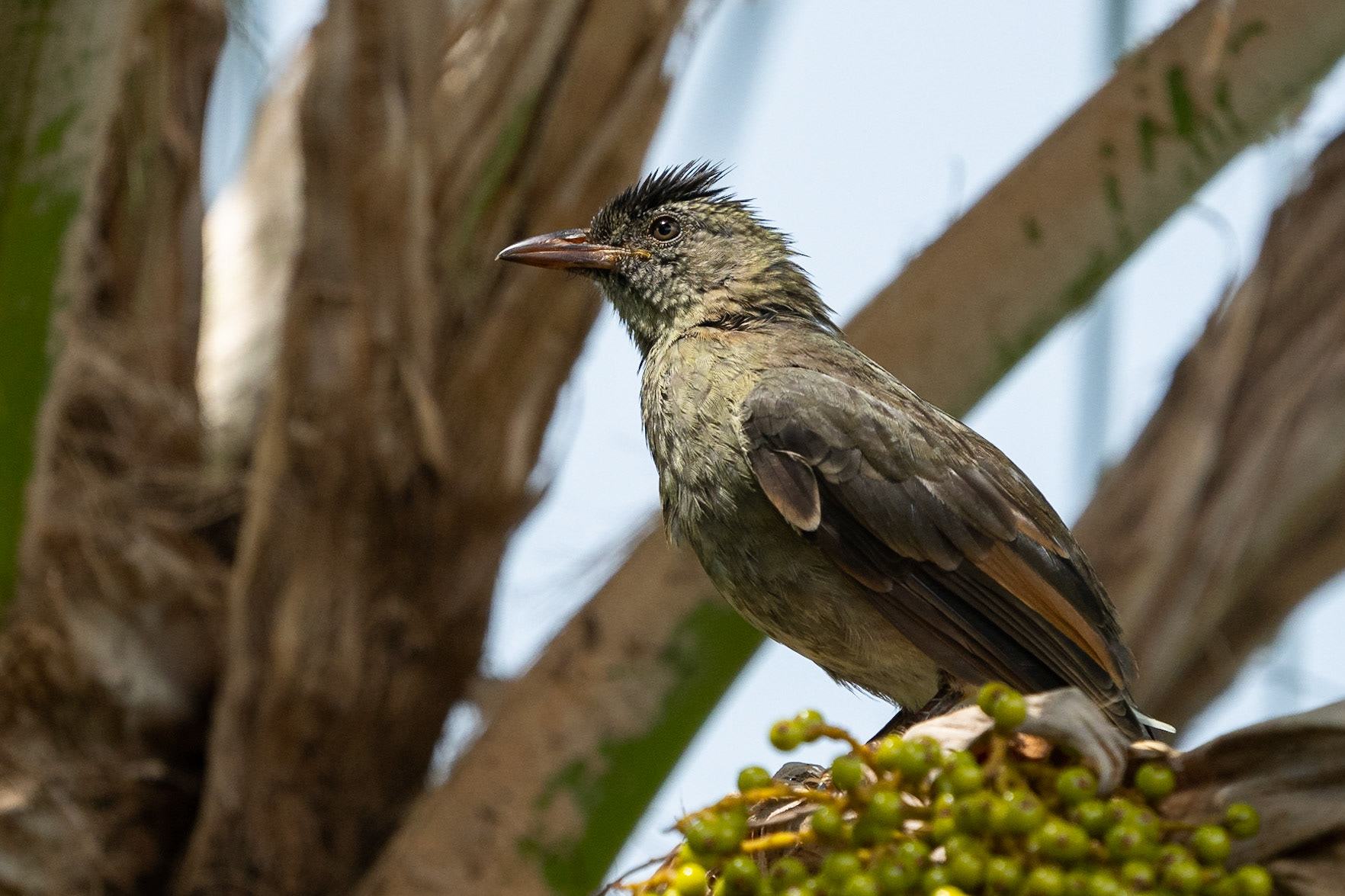
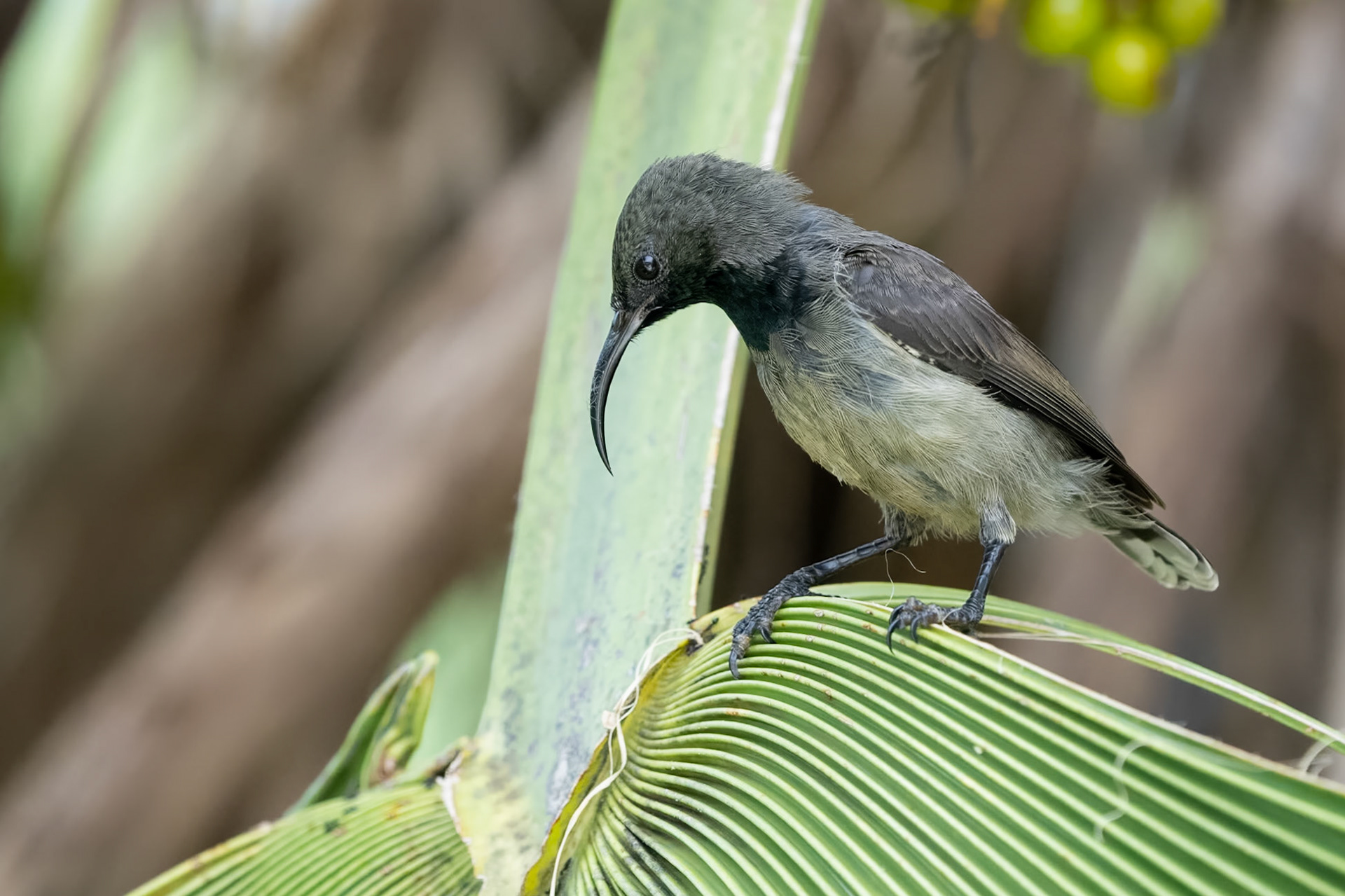
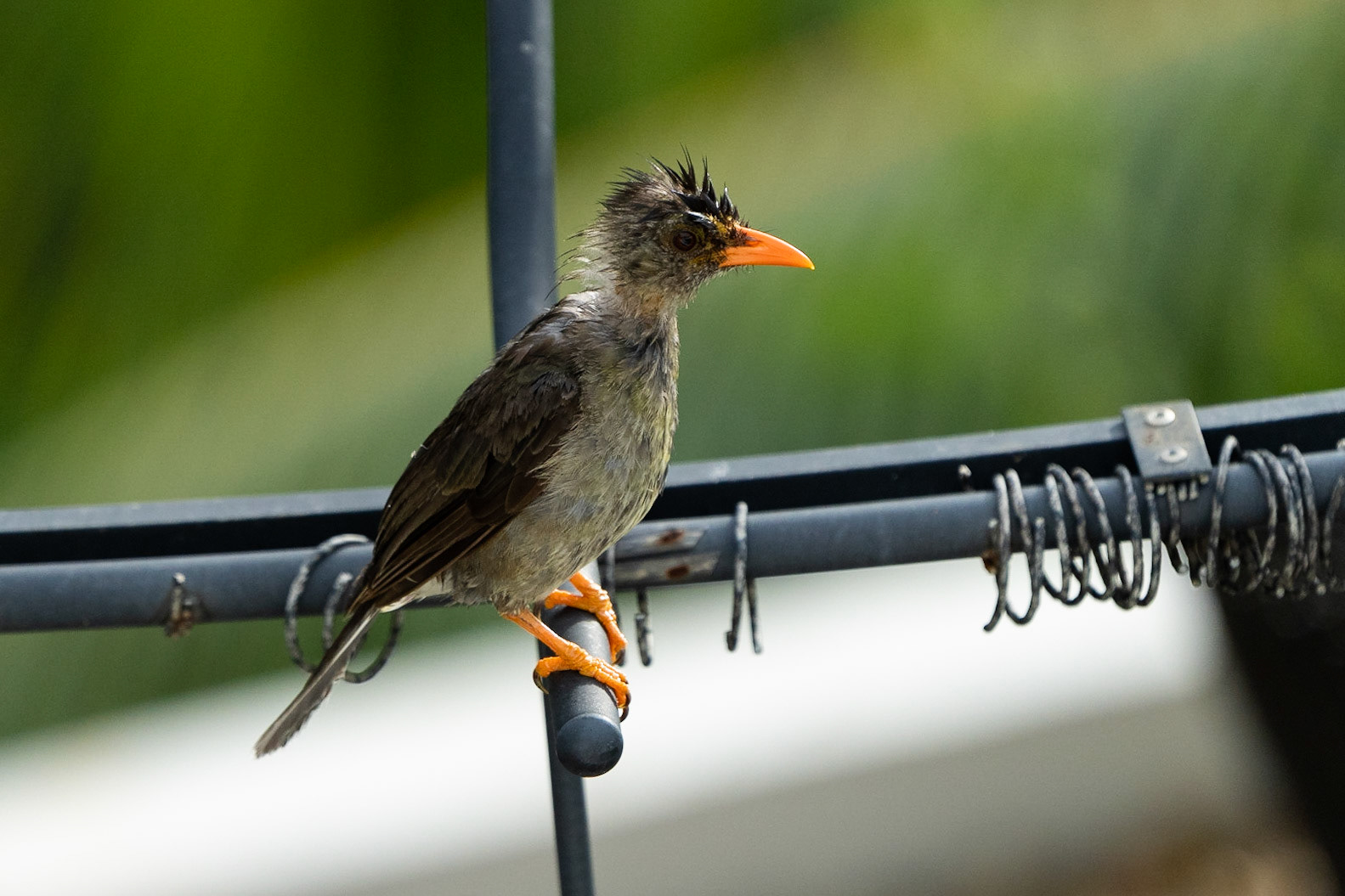
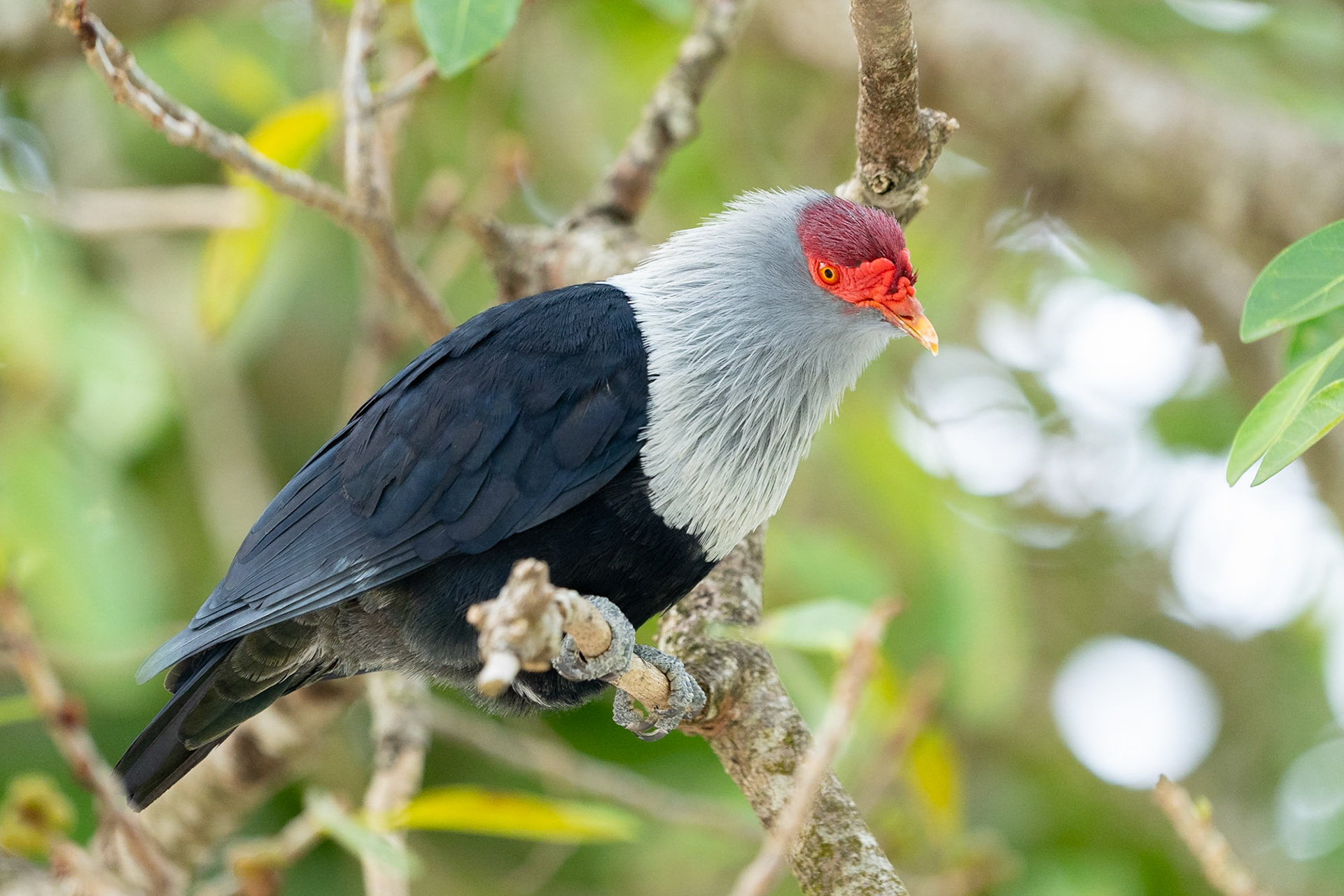
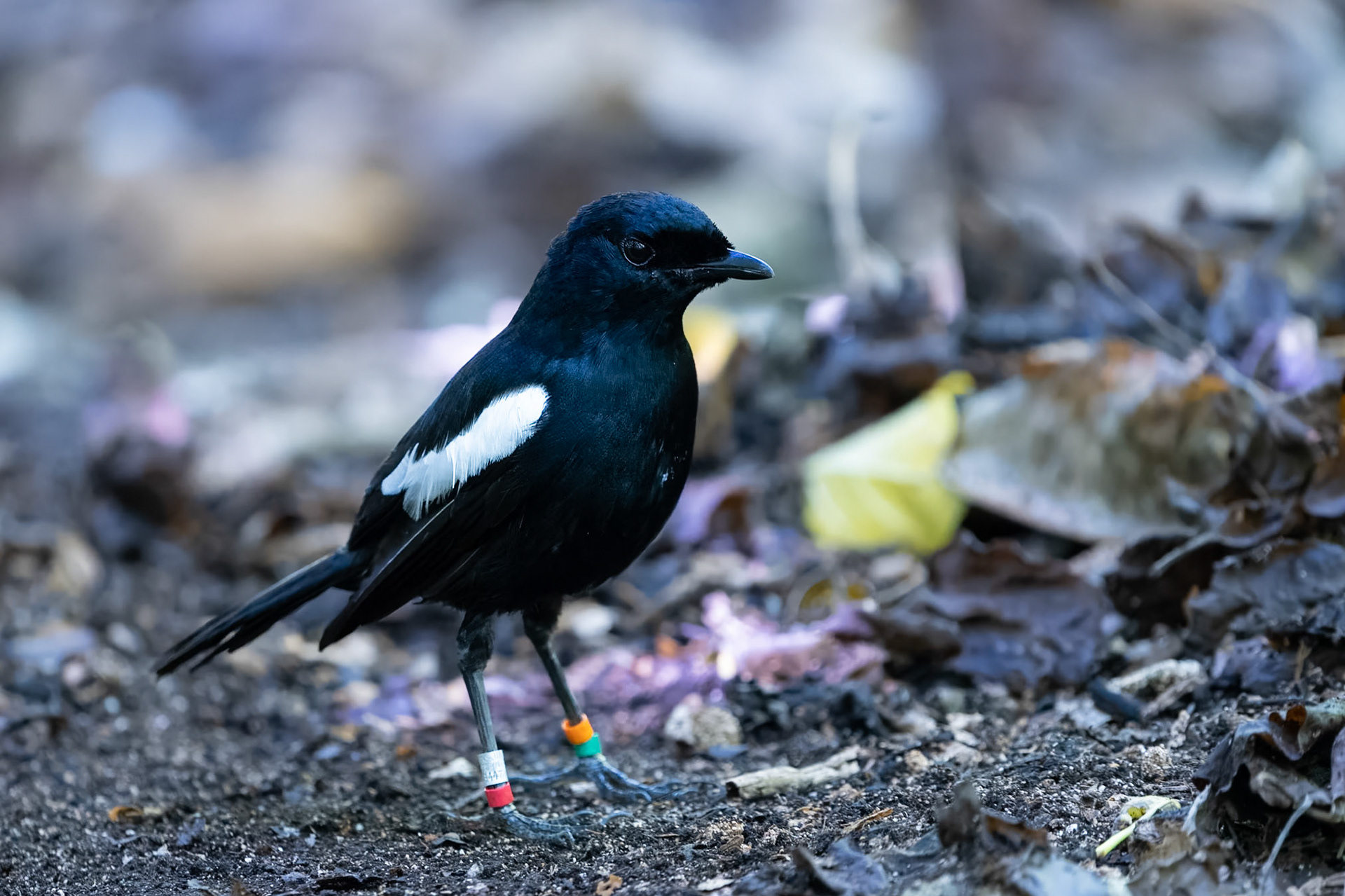
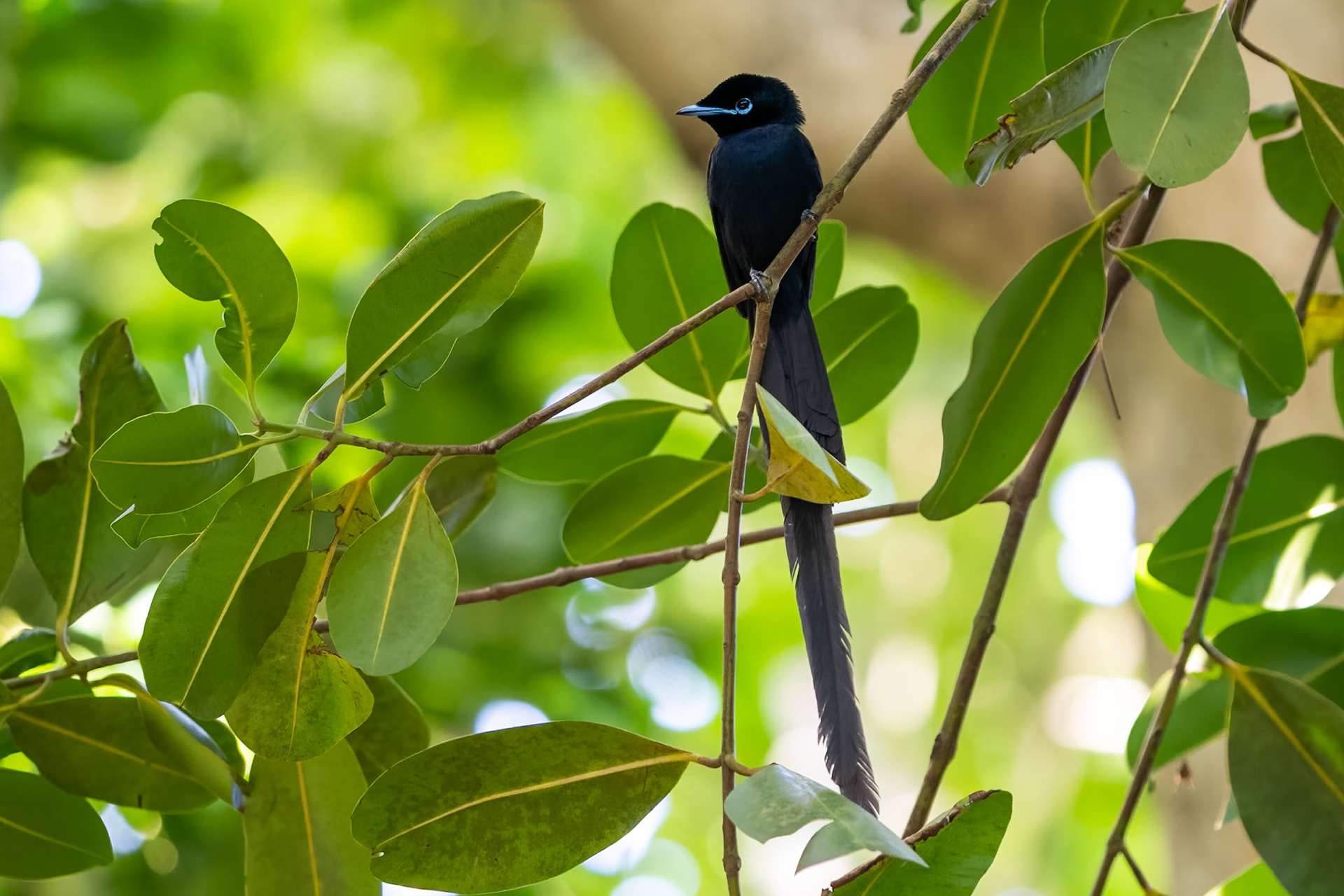







Seychelles Magpie-robin: 190 mature individuals
Seychelles Scops Owl: 200-280 mature individuals
Seychelles White-eye: 220-270, 250 mature individuals
Seychelles Paradise Flycatcher: 350-506 mature individuals
Seychelles Kestrel: 700-900 mature individuals
Seychelles Black Parrot: 730-1170 mature individuals
Seychelles Swiftlet: 1700-2000 mature individuals
Seychelles Fody: 2300 mature individuals
Seychelles Warbler: 3000 mature individuals
Seychelles Blue Pigeon: Unknown
Seychelles Bulbul: Unknown
Seychelles Sunbird: Unknown
Statistics according to Birdlife International
https://natureseychelles.org/
The most endangered of the endemic birds, the Seychelles Magpie Robin Copsychus sechellarum or Pi Santez in Creole, came close to extinction in the late twentieth century; in 1970 there were only about 23 surviving birds on one island (Fregate Island).
Through an active conservation programme coordinated by BirdLife International and later Nature Seychelles, which involved moving predators, improving habitat, providing nest boxes on Fregate, and moving birds to other predator-free islands to start new populations, the total number of birds has risen significantly, although it remains one of the rarest birds in the world. Its conservation status has greatly improved, but it still relies on conservation management and implementation of the Seychelles Magpie Recovery Team (SMART), which was formed to take conservation actions to save this species. SMART is coordinated by Nature Seychelles. The species was downlisted from being Critically Endangered to Endangered in 2005 after great efforts to increase its population. As the population has risen to 500 birds, there’s hope for its reclassification to a lower threatened status.
https://natureseychelles.org/
The Seychelles White-eye Zosterops modestus or Zwazo Linet in Creole, is rare and endemic. They may sometimes be seen in gardens and forests over 300m at La Misere, Cascade, and a few other places on Mahe.
It was regarded as one of the most endangered of the Seychelles endemic birds until 1997 when a thriving population was discovered on Conception Island. Since then, research has been carried out on the species and it has been successfully introduced to Fregate Island. In addition to insects, the white-eye feeds on fruits of native and introduced plants. The conservation goal for this species is to ensure its survival on at least three and ideally more islands in viable, self-maintaining populations. Its conservation status was changed from Critically Endangered to Endangered in 2005 by the IUCN and is now listed as Vulnerable.
https://natureseychelles.org/
The Seychelles Black Paradise Flycatcher Terpsiphone corvina or the Vev in Creole is endemic to Seychelles, you cannot find this bird anywhere else on earth. Although it was once widespread on Praslin and all its surrounding islands, the Vev was restricted to La Digue, where it is quite common. 23 adult birds were translocated from La Digue to Denis Island in November 2008, with the hope of eventually establishing a population of 40-50 birds on the island. The first chick successfully fledged on Denis Island in 2009 and a population of about 70 birds now thrives here. Birds were also transferred to Curieuse Island in 2018.
Birds have been seen on Marianne but it does not seem to breed there. The Vev thrives in tall forest of native trees (takamaka and bodanmyen), especially on the plateau of La Digue. It feeds on insects, flying to catch them in mid-air or pick them from underneath leaves. The original goal was to increase the number of breeding populations to three and to be able to reclassify the species from Critically Endangered to Vulnerable on the IUCN’s Red List of Threatened Animals. The overall population is steadily increasing and the bird has been reclassified as Vulnerable.
https://natureseychelles.org/
The Seychelles Kestrelor Katiti in Creole is the only native day-flying bird of prey in the central Seychelles and one of the only two in Seychelles (the other is Madagascar Kestrel found on Aldabra).
It eats a variety of small animals, mainly lizards. Pairs of birds defend a territory, keeping other kestrels out. They do not construct a nest but lay their eggs on the ground among rocks, on cliffs or on ledges of buildings such as church towers. Traditionally, people have thought of this bird as unlucky and even killed it. Now, it is protected by law. Nature Seychelles has recently researched the population status of this bird on Mahe and Praslin. Most of the surviving Seychelles Kestrel live on Mahe.
The conservation goal is to secure a stable breeding population of at least 500 pairs distributed among four of the larger granitic islands or island groups to reduce the threat of extinction.
https://natureseychelles.org/
Black Parrot Coracopsis barklyi or Kato Nwar in Creole is brown-grey in colour, not truly black. Historically treated as a local form of a species found in Madagascar and Comores, but it is now recognised as a separate species found nowhere but Seychelles, where it is restricted to Praslin Island.
It was once more widespread, but was killed by humans because it likes to eat cultivated fruit including mango bilimbi and papaya. It survived on Praslin and is now protected by law.
https://natureseychelles.org/
The Seychelles Fody Foudia sechellarum or Toktok in Creole, is less colourful than its introduced relative the Madagascar Fody, and is a species of forest or scrub habitats.
It seems unable to survive alongside black rats and now occurs on six islands: Cousin, Cousine, Frégate, D’Arros (introduced), Aride (reintroduced 2001) and Denis (introduced 2004). Translocation to Aride and Denis was successfully conducted by Nature Seychelles. It was formerly present on several other islands. It has a strong, broad bill and can tackle all sorts of food. On the small seabird islands where it lives, it can eat the eggs of birds, especially Fairy Terns’. When adult terns are disturbed, the fody tips the egg from its branch onto the ground to smash it and then eats it. In the past, when people harvested seabird eggs on these islands, Seychelles fodies were regarded as a pest. Now, both seabirds and fodys are protected and they survive easily alongside each other. Toktoks are very good parents, both parents care for the chicks and they mate for life. The conservation goal has been to spread the population to new islands and achieve a population of 2,000 adults by 2006. The total population of this species is now estimated at 3,500 individuals, equating to 2,300 mature individuals. This species is listed as Near Threatened
https://natureseychelles.org/
The Seychelles Warbler Acrocephalus sechellensis or Pti merl Dezil in Creole, came very close to extinction in the twentieth century. In 1968 there were about 29 birds left in a small patch of mangrove trees on Cousin Island.
In 1968 Cousin Island was declared a nature reserve to protect this critically endangered species; coconut palms were removed and native trees grew up all over the island. The warbler population increased rapidly as the warbler moved into the new habitat. Cousin Island reached carrying capacity for Warblers in 1982, allowing new populations to be established on Cousine and Aride in 1988 and 1990 (coordinated by Birdlife International). Nature Seychelles then coordinated further translocation to Denis Island and Fregate in 2004 and 2011 respectively. By 2014 the goal of increasing the species’ range to five separate populations sustaining over 3,000 individuals had been reached. This outstanding success meant that the species was reclassified to a lesser category of Near Threatened. Further transfers could allow this species to be removed from the list of threatened birds.
https://natureseychelles.org/
The Seychelles Blue Pigeon Alectroenas pulcherrima or Pizon Olande in Creole spends much of its life in the canopy of trees and eats the fruits of figs, Bwa dir (Canthium bibracteatum), ylang ylang and other trees.
In the courtship flight, birds fly steeply upward before gliding down with their wings held stiffly down. Once it was shot for food, it became quite rare, but the population has recovered and you can now see birds on many islands. Recently, it has spread to Cousin.
https://natureseychelles.org/
Unlike many endemic birds, Seychelles Bulbul Hypsipetes crassirostris or the Merl in Creole, are not in any immediate danger of becoming extinct.
You can see them on all the largest islands from sea level to high altitudes in gardens and scrub, although they are particularly common in old woodland. They are noisy and aggressive birds, usually seen in small groups, with a range of chattering or squawking calls. Adults are the only Seychelles land birds with orange beaks and legs, but in young birds, the beaks and legs are dull grey-brown.






